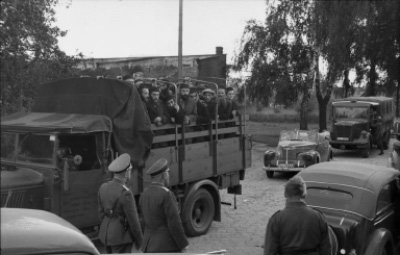Forced Resettlement
From the late 1930s, senior Nazis had discussed the possibility of completely expelling the Jewish population from Germany, thus ridding the nation of the perceived threat that Jews posed to German hegemony. The Reich Central Office for Jewish Emigration, based on Eichmann’s Austrian model, was established to ensure areas of the country became judenfrei: purged of Jews. Where the expelled Jews would go, however, was another matter, one on which the outbreak of war impacted greatly.
One location suggested for Jewish resettlement was Madagascar, which was under French colonial rule. Although France fell to Nazi Germany in the summer of 1940, continued fighting with Britain rendered the African island an impossible option on which to establish a Jewish colony. Some German Jews had emigrated to Palestine during the 1930s, but the ongoing conflict now made further emigration impractical.
Instead, attention turned to Poland, home to over 3 million Jews who, following the invasion, were under Nazi control in the west and Soviet control in the east. These Jews were generally more Orthodox and less assimilated than those in Germany, as they often spoke Yiddish and wore traditional dress.
Large parts of north and west Poland were immediately incorporated into the Third Reich after the outbreak of war, forming a greater Germany. Huge numbers of Jews and Poles from these areas were then forcibly moved from their homes so that Lebensraum would become available for ethnic Germans from other parts of the Reich. The Slavic peoples of Poland and Eastern Europe were, like Jews, considered Untermenschen by the Nazis: racially inferior subhumans.

Arrest and transport of Jews in Poland, September 1939
Bundesarchiv, Bild 101l-380-0069-33 / Lifta / CC-BY-SA
The initial destination of these displaced people was the Generalgouvernement, an area under civil administration situated in central and southern Poland, between the Soviet and Nazi occupied zones. The Nazis transferred an estimated 1 million people to the Generalgouvernement in the early years of the Second World War. From 1 December 1939, all Jews over the age of 10 who lived in this area had to wear a white armband bearing a blue Star of David, making them immediately identifiable. While Poles relocated to the Generalgouvernement were often subsequently assigned labour tasks, Jews were increasingly crowded into designated areas of towns and cities where they were segregated from non-Jewish society: ghettos.